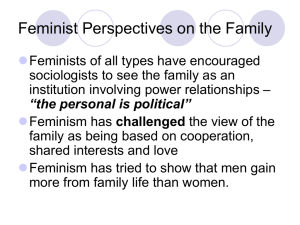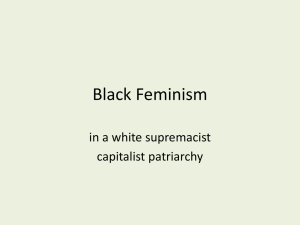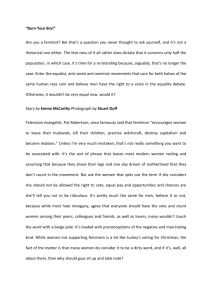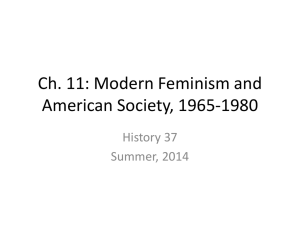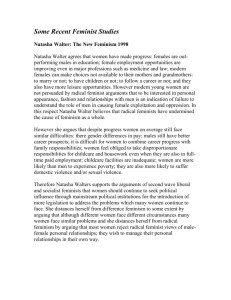Feminism for Dummies and Statistics
advertisement
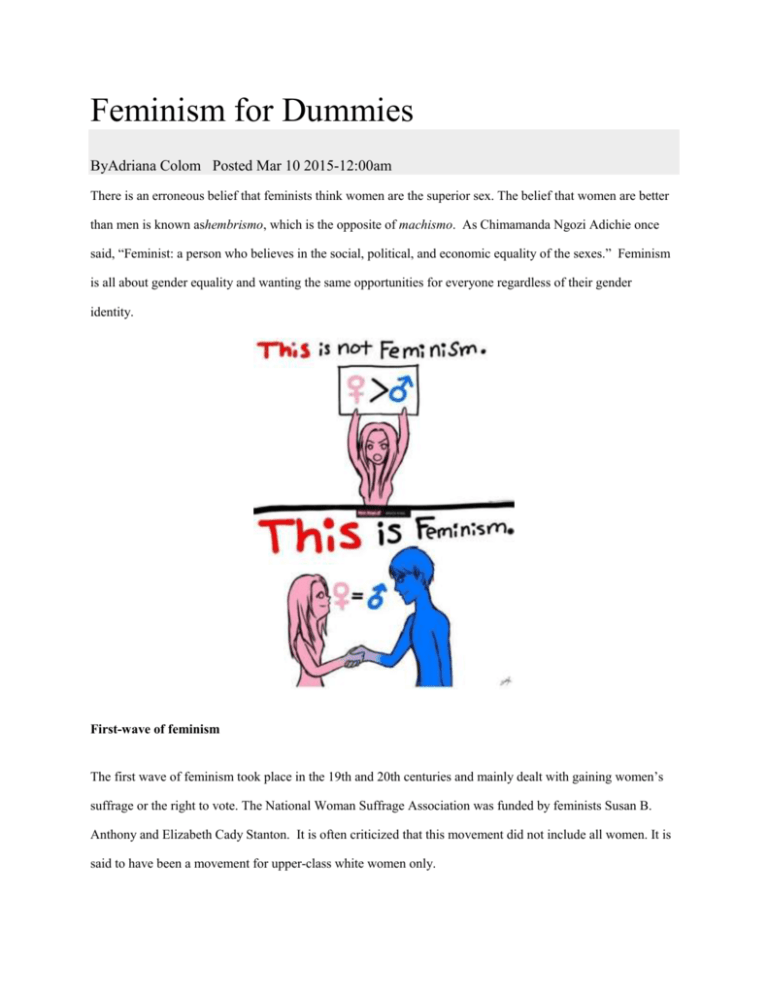
Feminism for Dummies ByAdriana Colom Posted Mar 10 2015-12:00am There is an erroneous belief that feminists think women are the superior sex. The belief that women are better than men is known ashembrismo, which is the opposite of machismo. As Chimamanda Ngozi Adichie once said, “Feminist: a person who believes in the social, political, and economic equality of the sexes.” Feminism is all about gender equality and wanting the same opportunities for everyone regardless of their gender identity. First-wave of feminism The first wave of feminism took place in the 19th and 20th centuries and mainly dealt with gaining women’s suffrage or the right to vote. The National Woman Suffrage Association was funded by feminists Susan B. Anthony and Elizabeth Cady Stanton. It is often criticized that this movement did not include all women. It is said to have been a movement for upper-class white women only. Second-wave of feminism The second wave of feminism began in the 1960’s and focused on a broader range of issues including civil rights movements, sexuality and reproductive rights, family, and the workplace. Feminists sought to be freed from the traditional roles of being a wife and mother. There were also protests against the Miss America pageant where women threw bras, makeup, girdles, and other products into their very own “freedom trash can” to criticize society’s beauty standards. Important feminist literature was published such as The Feminine Mystique by Betty Friedman and The Second Sex by Simone de Beauvoir. Third-wave of feminism The third wave of feminism is currently taking place! These modern day feminists are beginning to include issues that involve women of different ethnicities, races, sexual orientation, and backgrounds. Important issues that are being discussed are reproductive rights, rape culture, the media’s portrayal of women, gender violence, and the workplace. Basically, feminists want women to be themselves and do what they want! Even if that means lipstick and high heels, being a stay-at-home mom, or being the second female governor. We all have the right to do what makes us happy. It's time to say goodbye to those gender stereotypes that hold us back so often. Stats on Women’s Equality That Might Be Scarier than Halloween October 29, 2014 Why do we fight for women’s rights? In the face of statistics like these, how could we not? Read them yourself then find out what we are doing to make a fairer future for women. Violence against women and girls is a global issue with 1 in 3 women across the world experiencing violence. (Source: London School of Hygiene & Tropical Medicine 2013) Statistics show that the abuser is usually someone the woman knows: 38% of all murdered women are killed by their intimate partners. (Source: London School of Hygiene & Tropical Medicine 2013) Women spend at least twice as much time as men on domestic work, and when all work – paid and unpaid – is considered, women work longer hours than men. (Source: The World’s Women 2010: Trends and Statistics) Only 4% of signatories in 31 major peace processes between 1992 and 2011 were women: 2.4% of chief mediators, 3.7% of witnesses and 9% of negotiators were women. (Source: UN Women – Women’s Participation in Peace Negotiations: Connections between Presence and Influence 2011) 7.4% of countries have had female heads of states over the last 50 years. (Source: The Global Gender Gap Report 2013, World Economic Forum) A global survey of 1,119 women’s rights organisation from over 140 countries showed that only 1 in 10 received funding from bilateral donors, national governments and international non-government organisations. Meanwhile only 6.9% received funding from UN Women. (Source:AWID Global Survey “Where is the money for women’s rights?” 2011) The pay gap affects women of all backgrounds, but unsurprisingly, race and ethnicity matter when it comes to women’s paychecks. Hispanic and Latina women face the worst disparity, getting paid only 54 percent of what white men get paid. Despite the higher salaries and greater prospects for employment for science, technology, engineering, and math (STEM) careers, the pipeline continues to be dominated by men. Among the computing and engineering fields, which account for 80 percent of STEM jobs, women represent less than one-quarter of the workers. The 2012 election cycle proved significant for women; they bolstered their political representation in Congress to an all-time high. Yet there’s still not even one woman for every five men in Congress. While we’ve seen small but steady gains in women’s representation in national office,progress among state leadership has been meager. Only 35 women have served as state governors, and 24 states have never elected a woman to the governor’s seat. Several of these states have a chance to make history in the election next week, including Rhode Island and Wisconsin. So much for America being a leader in feminist progress. In its most recent Global Gender Gap Report, the World Economic Forum ranked the United States 60th among 136 countries for women’s political empowerment. The ranking places the United States behind India, China, and Uganda for women’s equality in political leadership. Partly due to the shame, stigma, and fear associated with reporting a sexual assault,more than half of sexual assaults since 2009 went unreported. The likelihood of reporting is even lower on college campuses. The Violence Against Women Reauthorization Act seeks to reconcile this problem by requiring colleges and universities to create transparent prevention programs that deter violence while encouraging more victims to come forward. Despite representing more than half of professional-level jobs, women’s leadership within the boardrooms of America has stagnated in recent years. Among the Fortune 500, women lead only 4.6 percent of companies. Investing in women’s talent and nurturing women’s selfconfidence are two methods for fostering greater opportunities for women to move up the leadership ranks (not to mention reaping the benefits of women’s perspectives). A 2009 study by the Center for Economic and Policy Research revealed that among 22 countries highly ranked in economic and human development, the United States is the only country that does not guarantee workers paid sick days. This means that more than 22 million working women lose money when they must miss work for an illness. Because women are often primary caregivers, a child’s illness frequently means that the mother is the one who misses work to care for the child. Unfortunately, for half of working mothers, that time is unpaid. Those who say the fight for women’s rights is over need only look at these two numbers: In the past year alone, more than 468 bills related to restricting women’s health and access to reproductive rights have been introduced in state legislatures. Shockingly, zero restrictions regarding men’s bodies have been brought to the floors of statehouses.





